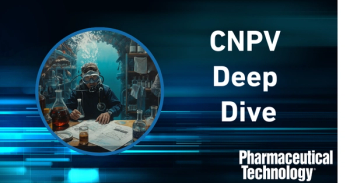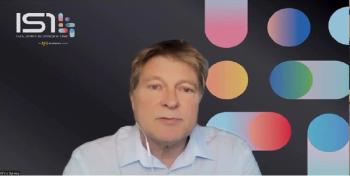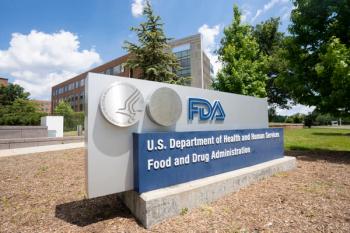
- Pharmaceutical Technology-01-02-2012
- Volume 36
- Issue 1
Innovator Liability Still Not Viable After Pliva v. Mensing
Recent legal decisions have further divided generic and brand manufacturer cases.
The United States Supreme Court's recent decision in Pliva v. Mensing was a watershed moment in the world of pharmaceutical products liability (1). In short, the majority in Mensing held that state tort law claims for inadequate warnings against manufacturers of generic prescription drugs are preempted by the provisions of the Food, Drug, and Cosmetic Act (FD&C Act), which require the product safety information for generic drugs to be identical to their branded equivalents. The primary distinction between Mensing and the Court's prior opinion in Wyeth v. Levine, which came to the opposite conclusion on the preemption question for branded drugs, is the branded manufacturers' ability to change the safety information for its products through the changes being effected (CBE) provisions of the Act (2).
The significance of this decision for drug manufacturers and potential plaintiffs is difficult to overemphasize because of the ever-expanding use of generic drugs in the United States. As the dissent in Mensing noted, generic drugs constituted 75% of all dispensed prescription drugs in the US in 2009. That number is expected to grow as the cost savings provided by generic drugs continue to mount.
The history of generic-drug benefits
Congress essentially created the modern generic-drug industry in 1984 with the passage of the Hatch–Waxman Amendments to the FD&C Act. The goals of Hatch– Waxman were to make drugs less expensive, while maintaining safety standards and incentives for new drug innovation. They achieved those goals by providing extended patent protection for new drugs hitting the market, while at the same time reducing the regulatory burdens on generic-drug manufacturers, thereby allowing them to provide comparable drugs at greatly reduced costs to consumers once a branded drug's patent protection expired.
In 1984, supporters of Hatch–Waxman predicted that the new amendments "would save American consumers $920 million over the next 12 years" (3). But recent studies have shown that Hatch–Waxman saved the American healthcare system more than $824 billion during the decade 2000–2009, including $139.6 billion in 2009 alone, meaning that the originally projected 12-year savings of $920 million are now being achieved every three days (4).
Although these cost savings are unquestionably beneficial for everyone paying for prescription drugs—most notably the US government, which spends hundreds of millions of dollars each year on prescription drugs for Medicare and Medicaid patients—the majority in Mensing took note of the now recognized tradeoff for consumers in the Hatch–Waxman regulatory scheme. That is to say that, post-Mensing, an allegedly injured plaintiff's ability to bring state law tort claims is based solely on whether the drug taken was a generic or its branded equivalent.
"We recognize that from the perspective of Mensing and Demahy, finding pre-emption here but not in Wyeth makes little sense. Had Mensing and Demahy taken Reglan, the brand-name drug prescribed by their doctors, Wyeth would control and their lawsuits would not be pre-empted. But because pharmacists, acting in full accord with state law, substituted generic metoclopramide instead, federal law pre-empts these lawsuits. We acknowledge the unfortunate hand that federal drug regulation has dealt Mensing, Demahy, and others similarly situated" (5).
The dissent put it even more starkly:
"Today's decision introduces a critical distinction between brand-name drugs and generic drugs. Consumers of brand-name drugs can sue manufacturers for inadequate warnings; consumers of generic drugs cannot" (6).
Although plaintiffs are attempting to assert novel and/or nuanced theories against generic-drug manufacturers to side-step Mensing, it is difficult to imagine many, if any, of these cases surviving summary judgment, much less appellate scrutiny. Thus, while some plaintiffs are attempting to plead their way around Mensing's pre-emption of claims against generic-drug manufacturers, others are refocusing on the branded manufacturers by attempting to establish liability for inadequate warnings against the branded manufacturers, even when the plaintiff ingested only the generic drug.
Current innovator liability
This so-called "innovator liability" theory is not new. In fact, it pre-dates Mensing by at least 17 years, with the most often cited case being a decision from the US Court of Appeals for the Fourth Circuit in Foster v. American Home Products Corporation (7). Interpreting Maryland law, the Fourth Circuit rejected the idea of liability for the branded drug manufacturers when the plaintiff ingested only the generic equivalent, regardless of whether the cause of action asserted was a traditional products liability claim (i.e., strict liability, breach of warranty, negligence) or a claim for negligent misrepresentation. The Court first noted that traditional products liability claims are not viable against defendants who did not manufacture the product in question. The Court then questioned whether the cause of action for negligent misrepresentation was simply "an effort to recover for injuries caused by a product without meeting the requirements the law imposes in products liability actions, which limits liability to defendants who manufactured the product at issue" (8).
Nonetheless, the Fourth Circuit assumed the theoretical viability of a negligent misrepresentation cause of action in a products liability case and went on to analyze the existence of a duty of branded manufacturers to consumers who ingest only the generic equivalents of their drugs. The question turned to whether it was foreseeable to the branded manufacturer that alleged misrepresentations regarding its drug would result in injury to users of the generic equivalent. In the most often quoted line of the case, the Foster Court held, "We think to impose a duty in the circumstances of this case would be to stretch the concept of foreseeability too far" (9).
During the next 14 years, courts interpreting the laws of at least 10 other states, approved of Foster's reasoning and rejected the innovator liability theory. But in 2008, a California intermediate state appellate court case called Conte v. Wyeth went against the grain (10). In Conte, the Court acknowledged Foster but reached the opposite conclusion when it held that under California law, the branded manufacturer of Reglan owed a common law duty to consumers who never ingested their product, but rather ingested only the generic equivalent, because it was foreseeable that doctors and patients would rely on the safety information provided by the branded manufacturer.
In the past three years, a single federal court interpreting Vermont law is the only court outside of California that has followed Conte and disagreed with Foster. During this same period of time, numerous courts interpreting the laws of at least 20 states have continued to follow the majority rule by explicitly approving Foster and/or rejecting Conte.
Despite this overwhelming majority rule, plaintiffs will undoubtedly argue that Mensing changes the analysis and requires that someone (i.e., the branded manufacturers) must be held accountable for injuries to a consumer injured by a generic drug with allegedly inadequate warnings. Indeed, several of the cases following the majority rule, including Foster, state the (now known to be mistaken) belief that the generic-drug manufacturers are liable for such injuries. But while that belief may have given some courts comfort in the equities of dismissing the claims against the branded manufacturers, courts following the majority rule before and after Mensing have recognized that generic manufacturer liability is not a prerequisite for rejecting innovator liability. In fact, in 2004, seven years before Mensing, the Eastern District of Pennsylvania correctly predicted the outcome of Mensing's pre-emption conclusion, yet still followed the majority rule rejecting innovator liability.
"Accordingly, we find that state tort law which would hold a generic drug manufacturer liable for failing to modify a label when, pursuant to the Hatch–Waxman Amendments to the FDCA [FD&C Act], the ANDA approval process required that the labeling be the same as that approved for the innovator drug, and when the FDA would have deemed any post-approval enhancements 'false and misleading,' would actually conflict with the FDCA. For these reasons, as well as our conclusion that we must afford deference to the FDA's position that the claims are pre-empted, we find that Plaintiff's failure-to-warn claims are impliedly preempted.
"Thus, this Court holds that under Pennsylvania law, there is no duty of care owed by a brand-name prescription drug manufacturer to a plaintiff allegedly injured by a generic equivalent drug manufactured by another company. Thus, even if this Court's conclusion regarding pre-emption were found to be improper, the claims against [the branded manufacturer] Defendant GSK must still be dismissed" (11).
Moreover, post-Mensing, there are no published cases questioning the validity of the majority rule rejecting innovator liability, and at least three courts have continued to follow the majority rule despite arguments from plaintiffs that Mensing should change the analysis.
In Smith v. Wyeth, the Sixth Circuit affirmed the dismissal of claims against both the generic-drug manufacturer (based on Mensing) and the branded manufacturer (based on the majority rule from Foster and its progeny) by plaintiffs who alleged injuries as a result of taking generic metoclopramide, thereby leaving the plaintiffs with no remedy (12). The federal District Courts of Maryland and the Western District of Louisiana have reached the same conclusion.
"[T]he Supreme Court's opinion in Mensing in fact gave this Court no reason to reconsider its entry of final judgment in favor of [the branded manufacturer] Defendants.... The Supreme Court's holding in Mensing neither created nor abrogated any duty under Maryland law with regard to brand name manufacturers like Defendants" (13).
End result for the market
Mensing's pre-emption conclusion is completely irrelevant to the legal tenability of the innovator liability theory. The fact that one group of potential defendants is absolved of liability based on pre-emption does not mean that liability necessarily falls to another group. In fact, as stated above, both the majority and dissenting opinions in Mensing recognized that the net result of the decision on consumers of generic drugs was that they were now without a remedy for any claim of inadequate warnings, not that the improper defendants had been identified.
While this result may be unsatisfying to some, that is the legally correct byproduct of Mensing. Compared to judicially created innovator liability, the case also makes sound policy. Altering the long-held majority rule would be a knee-jerk reaction to a perceived unfairness without any basis in the law. As those types of decisions often do, it would likely result in a variety of unintended and harmful consequences that would throw off the balance created by Hatch–Waxman and threaten the objectives that underlie it. Branded companies would likely pull their drugs from the market once the patent had expired to reduce potential liability. This would result in less choice, less competition, and higher prices. Alternatively, branded companies could keep their products on the market, but at even higher prices for both their patented drugs and their drugs with generic competitors to compensate for the potential liability.
If Congress decides that Hatch– Waxman's tradeoff of drug access and affordability in exchange for the generic-drug manufacturers' immunity from state law failure to warn claims is untenable, then Congress can act to redress the situation. "But it is not Court's task to decide whether the statutory scheme established by Congress is unusual or even bizarre" (14). It is also not the job of the state or federal courts interpreting state tort law to torture the well-established statutory and common law schemes to rectify any perceived inequitable result.
References
1. 131 S.Ct. 2567 (2011).
2. 129 S.Ct. 1187 (2009).
3. Statement of Rep. Douglas Walgren, 130 Cong. Rec. H24456 (Sept. 6, 1984).
4. IMS Health, "Generic Medicines Saved US Health Care System $139.6 Billion in 2009; $824 Billion Saved over the Last Decade" (July 2010).
5. Mensing, 131 S.Ct. at 2581.
6. Id. at 2593. (J. Sotomayor, dissenting).
7. 29 F.3d 165 (4th Cir., 1994)
8. Id.
9. Id. at 171.
10. 168 Cal.App.4th 89 (Cal. Ct. App., 2008).
11. Colacicco v. Apotex, 432 F.Supp.2d. 514, 537–538, 543 (E.D. Pa. 2006).
12. F. 3d, 2011 WL 4389211 (C.A.6 (Ky.), Sept. 22, 2011.
13. Gross v. Pfizer, Civ. A. No. 10-cv-00110-AW, 2011 WL 4005266, *2 (D.Md.), Sept. 7, 2011; see also Morris v. Wyeth, Civ. A. No. 3:09-CV-854, 2011 WL 4975317, *2 (W.D. La.), Oct. 19, 2011.
14. Mensing, 131 S.Ct. at 2582.
Zach Hughes is a partner at Baker Botts,
Articles in this issue
almost 14 years ago
Assessing Tablet-Sticking Propensityalmost 14 years ago
Here's to a Year of Compromisealmost 14 years ago
Venture-Capital Funding Falls but Shows Some Momentumalmost 14 years ago
Budget Crunch, Political Battles Shape Policy Agenda for Yearalmost 14 years ago
All Systems Slowalmost 14 years ago
Contract Services in 2012almost 14 years ago
Inside USP: Global Harmonization Presents Opportunities and Challengesalmost 14 years ago
Innovations for 2012almost 14 years ago
Broadening the Toolbox in Drug Development and AnalysisNewsletter
Get the essential updates shaping the future of pharma manufacturing and compliance—subscribe today to Pharmaceutical Technology and never miss a breakthrough.




